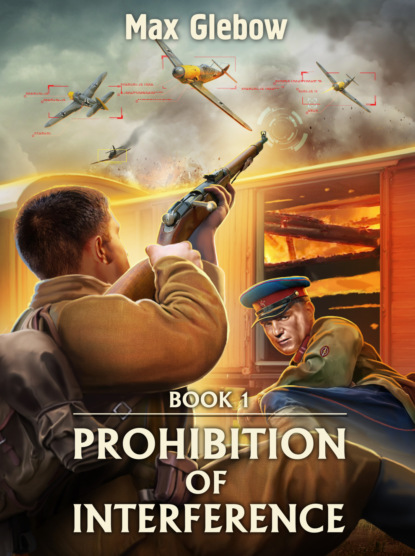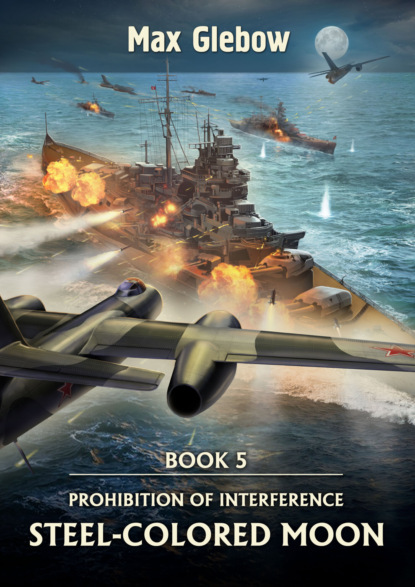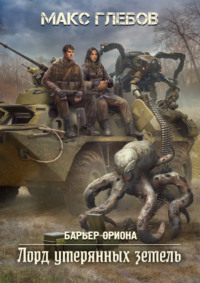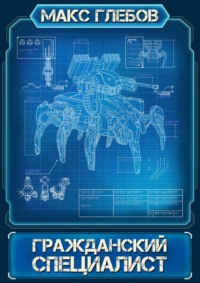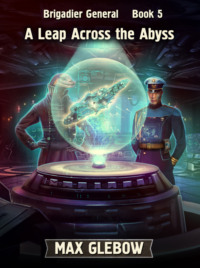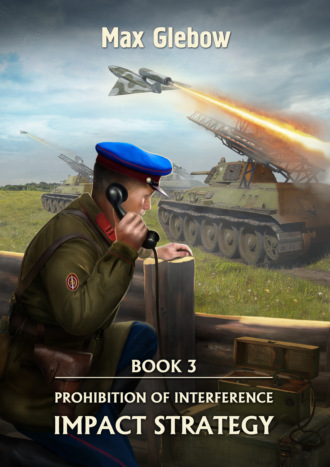
Полная версия
Prohibition of Interference. Book 3. Impact Strategy
“Nagulin liquidated the "fast-moving Heinz"?” asked again Sudoplatov, still not fully believing what he had heard.
“That's right, Pavel Anatolyevich, that's right.”
“And now what?”
“Take your subordinate away from the investigators,” Beria shrugged. “Terminate the case for lack of corpus delicti.”
Chapter 5
“Do you also draw?” Lena's right eyebrow went up when she saw me, pencil and ruler in hand, concentrating on drawing something on a piece of paper.
I put my pencil and ruler aside and looked at my girlfriend, who had just woken up. Sudoplatov gave me two days leave, which surprisingly coincided with the leave granted to Sergeant Serova for her success in combat and political training. I, however, was forbidden to go outside the guarded perimeter, and upon learning of this, Lena also preferred to stay confined to barracks, in my room.
“It's not a drawing,” I smiled, looking at her surprise, “An idea came up, and I'm trying to make a draft. To be honest, I've never done this before, so it's hard to do. Here, I found a drafting guide in the library. I have to learn it as I go along.”
“And what is that?” Lena looked a little disappointed, and I smiled again, but this time to myself.
“It's just a rough draft so far,” I answered evasively, “When I do, I'll show you. Let me draw your portrait instead.”
“Can you do it?” My girlfriend looked at me with mild disbelief.
“I used to draw pretty good when I was a kid,” I shrugged.
“Well, try it. Just wait, I'm going to get cleaned up.”
This process was not quick and required Lena to visit her room, so I had almost 40 more minutes, which I used to wrestle with a pencil and a piece of paper. Good thing I had the help of the computer and implants, otherwise it would have taken much longer to make the sketches.
I really liked the idea of American engineers. They were the first to think of combining the shaped charge projectile, recoilless rifle, and rocket motor in a single product, and to make it compact and suitable for use in combat by one man.
The other thing is that, in my opinion, they overdid it with the complexity of the design. The electrical system for igniting the grenade's propellant charge, including dry batteries, a signal light, and electrical wiring, was completely unnecessary in this weapon. Maybe the Americans could afford it, but I needed a really mass-produced infantry anti-tank weapon, which meant that it had to be as simple as a felt boot, and very cheap to produce, but still effective enough in combat.
Another drawback of the American design that immediately caught my eye was the completely inadequate caliber of the grenade. What is 60 millimeters? Such a thing would penetrate the frontal armor of local tanks only in conditions close to ideal, and that's hardly ever seen in combat.
Anyway, I fed the initial data to the computer and made it optimize the American design. I had to do a lot of work. Artificial intelligence is not a human. One can't explain such a task to it with one's fingers. I had to come up with everything that required at least some creativity on my own and formalize my ideas in the form of concrete algorithms, while the computer had to choose the best dimensions and the best construction materials.
First of all, I removed all electrical components from the product – the grenade launcher can do just fine with the classic firing mechanism with a fuse. The second question was the caliber. I didn't want to increase the diameter of the launch tube, and I didn't need to – shells with driving rods have been known since the Russo-Japanese War, so increasing the diameter of the grenade to 100 millimeters was easy enough. But I left the calculations of the angle of the conical hollow, the thickness of its walls and other design parameters to the computer – it will do it much better than me. This also applied to the composition of the explosive, which would be used to calculate the design of the grenade. With the help of various non-obvious additives, the charge must be made unique and hard to reproduce, so that in the case of a simple copying of the grenade launcher by the enemy its characteristics would be significantly degraded.
Конец ознакомительного фрагмента.
Текст предоставлен ООО «ЛитРес».
Прочитайте эту книгу целиком, купив полную легальную версию на ЛитРес.
Безопасно оплатить книгу можно банковской картой Visa, MasterCard, Maestro, со счета мобильного телефона, с платежного терминала, в салоне МТС или Связной, через PayPal, WebMoney, Яндекс.Деньги, QIWI Кошелек, бонусными картами или другим удобным Вам способом.
Примечания
1
Ludwig Becker (22 August 1911 – 26 February 1943). One of the best night fighter pilots of the Luftwaffe, he developed tactics to counteract night raids on Germany by British bombers. He participated in tests of the first radars, won the first victory using "dark interception" (using radar). Becker destroyed about 30 enemy bombers. Becker died because of a mistake by his commanders, who decided to engage night fighters to repel daytime attacks by American bombers. On February 26, 1943, 12 night fighters attacked a group of B-24 Liberator heavy bombers over Helgoland Bay. The only German fighter shot down in that battle was the plane of the commander, Hauptmann Becker. The Americans lost seven bombers. Later on, the Luftwaffe night fighters suffered significant losses because the erroneous order to use them in the daytime was never rescinded.



